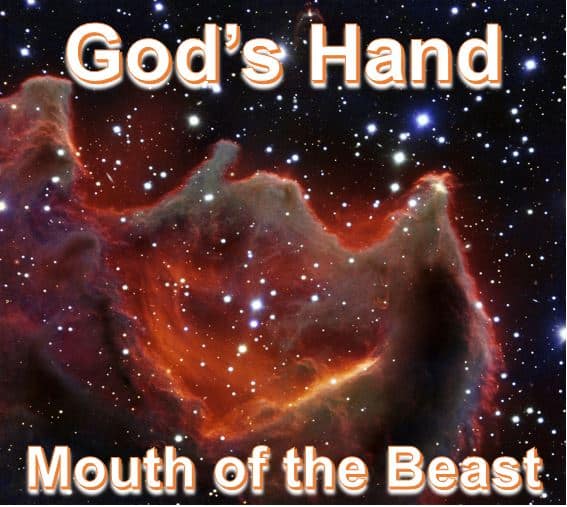The Very Large Telescope has pictured a massive cometary globule, known as ‘God’s Hand’ or ‘Mouth of the Beast’, in incredible detail.
The cometary globule CG4 looks like the gaping mouth of a gigantic celestial creature in the new image from the European Southern Observatory’s (ESO’s) Very Large Telescope.
It is actually a faint nebula, making it extremely difficult for amateur astronomers to detect. Scientists say CG4’s exact nature remains a mystery. Despite its name – cometary globule – the nebula has nothing to do with comets.
Despite looking spectacular and bright, the “Bok globule” is really a dark cloud of space gas and dust where stars are formed. These nebula are only one or two light-years across, and contain the equivalent mass of about 100 of our Suns.

The head of CG4, the part visible in this image, which resembles the head of a gigantic beast, has a diameter of 1.5 light-years. The tail of the globule (not visible, extends downwards), is about 8 light-years long. Astronomically speaking, it is a relatively small cloud. (Image: ESO)
Most cometary globules found so far are comparatively small. They are isolated, relatively small clouds of neutral gas and dust within the Milky Way, which are surrounded by ionized material.
The Very Large Telescope image shows the head part of the nebula, which consists of a thick cloud of dust and gas. It is only visible because nearby stars light it up.
While making it possible for us to see the nebula, those stars are also slowly destroying it. The radiation emanating from them is gradually eroding the particles that scatter the starlight.
Scientists are not sure why cometary globules look like they do. Some believe a nearby exploding supernova gave them that shape, while others suggest that stellar winds and radiation are responsible for the massive nebulars’ shape.
The European Southern Observatory wrote:
“To find out more, astronomers need to find out the mass, density, temperature, and velocities of the material in the globules. These can be determined by the measurements of molecular spectral lines which are most easily accessible at millimeter wavelengths – wavelengths at which telescopes like the Atacama Large Millimeter/submillimeter Array (ALMA) operate.”
CG4 is in the constellation Puppis. It is approximately 1,300 light-years from Earth.
ESO telescopes are scientific instruments, so most of the data they produce are not suitable for making color images. Cosmic Gems, a program run by ESO – makes use of the Very Large Telescope when it is not busy, so that it can take spectacular pictures of objects in space.
Video – VLT image of the cometary globule CG4

